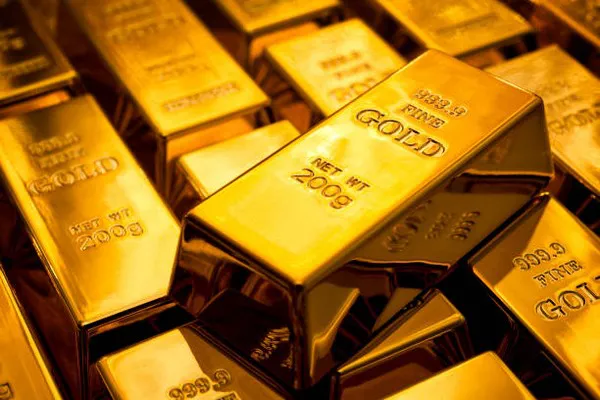As economic cycles ebb and flow, investors often turn to precious metals such as gold and silver as safe-haven assets to protect their wealth during times of uncertainty. The dynamics of gold and silver prices during recessions have intrigued economists and investors alike. Understanding how these metals behave in economic downturns is crucial for investors seeking to diversify their portfolios and safeguard their assets. This article delves into the historical performance of gold and silver during recessions, their underlying market dynamics, and their potential role as hedging instruments.
Historical Performance:
Gold and silver have long been recognized as stores of value throughout history, retaining their worth when fiat currencies falter. During economic recessions, the demand for these precious metals tends to surge as investors seek refuge from market turmoil. Historical data reveals that both gold and silver prices have exhibited resilience during periods of economic downturns.
In the 2008 financial crisis, for instance, gold and silver prices experienced significant appreciation. Gold, often considered the ultimate safe haven, reached new highs, surpassing $1,000 per ounce in March 2008 and continuing its upward trajectory throughout the recession. Silver followed a similar trend, albeit with greater volatility, as it is not only a monetary asset but also an industrial metal. Despite short-term fluctuations, both metals ultimately provided a hedge against the turmoil in financial markets.
Market Dynamics:
Several factors contribute to the behavior of gold and silver prices during recessions. One primary driver is their status as safe-haven assets. When investors lose confidence in traditional financial instruments such as stocks and bonds, they flock to precious metals, driving up demand and prices. This flight to safety phenomenon bolsters the appeal of gold and silver during economic downturns.
Moreover, the inverse relationship between precious metals and fiat currencies amplifies their attractiveness during recessions. As central banks resort to expansionary monetary policies, including quantitative easing and low-interest rates, to stimulate economic growth, the value of fiat currencies tends to depreciate. In contrast, gold and silver, with their intrinsic value, serve as a hedge against currency devaluation, making them particularly appealing in times of economic uncertainty.
Furthermore, the industrial demand for silver adds another dimension to its price dynamics during recessions. While gold’s value primarily stems from its monetary attributes, silver is also widely used in various industrial applications, including electronics, solar panels, and medical devices. Consequently, economic downturns that dampen industrial activity can exert downward pressure on silver prices, albeit to a lesser extent compared to other commodities.
Role as Hedging Instruments:
Gold and silver play a crucial role as hedging instruments in investment portfolios, especially during recessions. Their low correlation with traditional financial assets such as stocks and bonds makes them effective diversifiers, helping to mitigate portfolio risk. By allocating a portion of their assets to precious metals, investors can reduce overall portfolio volatility and preserve capital during economic downturns.
Moreover, the long-term inflation-hedging properties of gold and silver enhance their appeal as portfolio diversifiers. While fiat currencies are susceptible to erosion in purchasing power over time due to inflationary pressures, precious metals maintain their intrinsic value, serving as a bulwark against inflationary risks. Therefore, holding gold and silver can provide a safeguard against the erosion of real wealth during periods of rising prices.
Practical Considerations:
Despite their potential benefits, investing in gold and silver during recessions entails certain considerations. First and foremost, investors should assess their investment objectives, risk tolerance, and time horizon before allocating capital to precious metals. While gold and silver can serve as effective hedges against economic downturns, they may not always outperform other asset classes over the long term.
Furthermore, the form of investment matters when considering exposure to gold and silver. Investors can gain exposure to these metals through various means, including physical bullion, exchange-traded funds (ETFs), futures contracts, and mining stocks. Each investment vehicle comes with its own set of advantages and risks, and investors should carefully evaluate their options based on factors such as liquidity, storage costs, and counterparty risk.
Additionally, timing plays a crucial role in investing in gold and silver. While economic recessions typically coincide with heightened demand for precious metals, market timing can be challenging. Prices may already reflect expectations of economic downturns well before they materialize, limiting the potential for outsized returns. Therefore, investors should adopt a disciplined approach to asset allocation and refrain from attempting to time the market.
See Also Unlocking the Value: Is 18 Karat Gold Pawnable?
Conclusion:
In conclusion, gold and silver have established themselves as valuable assets for investors seeking shelter during economic recessions. Their historical performance, market dynamics, and role as hedging instruments underscore their significance in portfolio diversification and wealth preservation. While investing in precious metals carries certain considerations and risks, prudent allocation can enhance the resilience of investment portfolios against market volatility and economic uncertainty. As economic cycles continue to fluctuate, gold and silver are likely to remain cornerstones of prudent investment strategies, offering a safe harbor in turbulent times.


